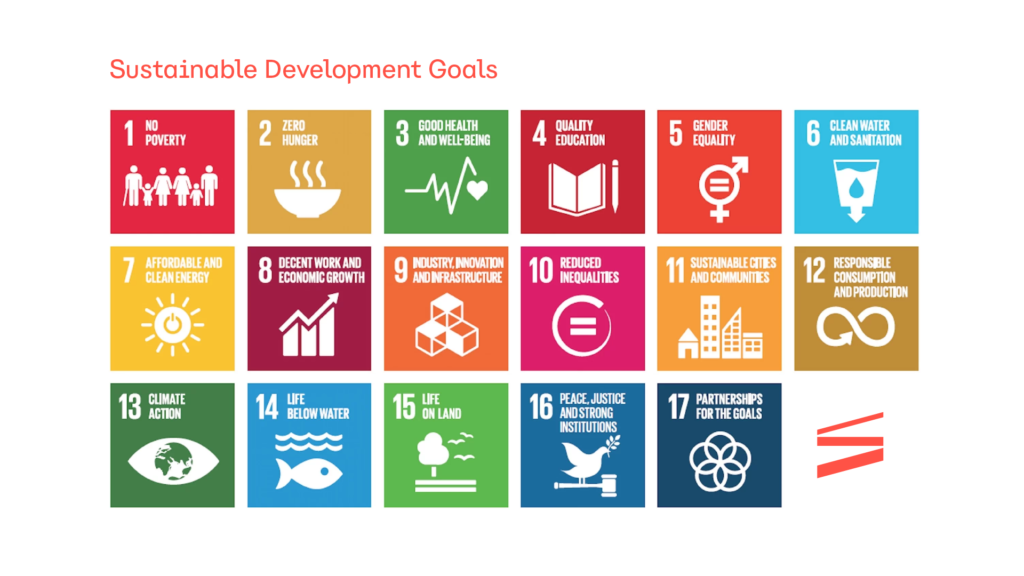Mais buscados:
Energy
Residential
Business
Renew Energy
How do you envision the world in 2030? In the expectation that it will be a better place, based on equality, diversity and sustainability, the United Nations (UN) developed the Sustainable Development Goals, also known as SDGs, during the Sustainable Development Summit, in 2015.
If you have never heard of the SDGs, or are not sure how important they are, this text will help clarify possible doubts. Continue reading and understand what are the UN’s proposals and what is being done to achieve the goals.
The Sustainable Development Goals, or SDGs, are a list of goals that propose a joint effort to ensure equal access to rights considered basic for any person to have a dignified life.
In total, there are 17 goals, distributed across 169 global targets, which include combating poverty, inequality, injustice and climate change, ensuring sustainability.

When the SDGs were implemented during the Sustainable Development Summit, in 2015, 193 countries assumed responsibility to adopt measures to help achieve the goals by 2030.
In a way, the SDGs can be considered an update of the Millennium Development Goals (MDGs), a list of eight UN goals that were in force between 2000 and 2015, aiming to expand access to basic resources. The MDGs were established after the United Nations Millennium Summit in 2000.
To facilitate their understanding, the 17 SDGs can be broken down into four groups:
The SDGs provide guidelines so that the planet and all its inhabitants can have more sustainable, inclusive and fair societies. Furthermore, each SDG target proposes measures to be adopted to address increasingly urgent problems, aimed at a more prosperous future for humanity.
One example is climate change, which calls for immediate action, especially to reduce gas emissions that contribute to global warming. Based on initiatives like this, in addition to governments and companies having guidelines to base their actions on, citizens have something to look up to and contribute to the planet’s sustainable development in their day-to-day. This creates a culture of sustainability that benefits the public and private sectors as a whole, as well as the planet in the medium and long term.
The SDGs are not legally binding. This means that they are not mandatory from a legal point of view, and there is no specific legislation that requires action to be taken to achieve them. This, however, does not prevent governments, companies and even people, to a smaller extent, from adopting attitudes in favor of the SDGs.
The implementation of strategies for the SDGs to be achieved within the proposed deadline (i.e., 2030) faces serious challenges that require a joint effort for them to be fulfilled. But this effort should not be the responsibility only of the countries that adopted the UN’s SDGs.
Companies and society play an important role in achieving the SDGs, mainly due to the need for investments and market innovations to implement the necessary changes. Furthermore, engagement from both sides is important to map and maintain connection with the specific pain points of each location and community.
In conjunction with governments and large companies, this can optimize efforts and resources, making all the difference in the results obtained for each of the goals established during the Summit.
As expected, Serena operates in line with the strictest standards of management, governance and sustainability. Thus, based on its materiality matrix and mapping of the main impacts of its value chain, Serena linked the SDGs to its strategy and guidelines.
In this process, the company defined the five top-priority SDGs in its ESG journey, which aim to guide the company’s business plan and integrate the concepts and practice of sustainability into the entire team’s day-to-day. See why they were selected:
• 4. Quality education: Promote quality education to enable relevant and concrete opportunities for effective learning and income generation, since knowledge is a driver of sustainable development;
• 7. Affordable and clean energy: Ensure complete freedom of choice, competitiveness between agents and, above all, the supply of clean and inexpensive energy to all Brazilians;
• 8. Decent work and economic growth: Identify and mitigate risks to people’s health and safety, and ensure safe and healthy operations, as well as sustainable relations;
• 9. Industry, innovation and infrastructure: Enable the ability to adapt to new scenarios, anticipate new market trends and ensure the Company’s longevity, in addition to seeking new solutions for energy consumers;
• 13. Climate action: Act by example and know that producing 100% renewable energy is just part of our contribution to the urgent fight against climate change.
Now that you know what the SDGs are and which ones are part of Serena’s journey, check out the company’s sustainability portal. Be a part of the energy that empowers companies and people to grow with us.
See also:

Receive the latest news from Serena and the energy market!
